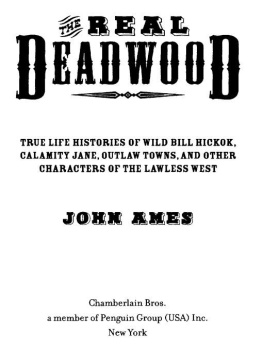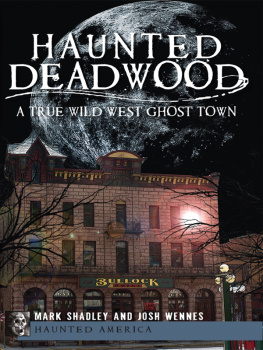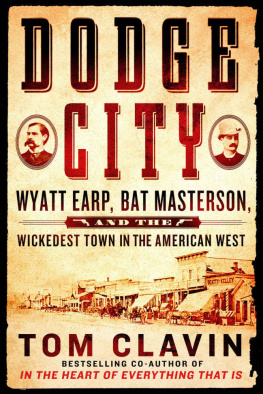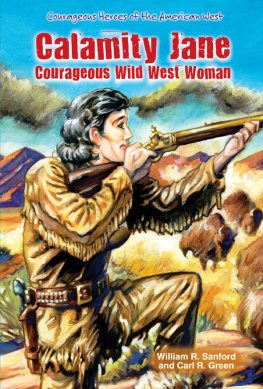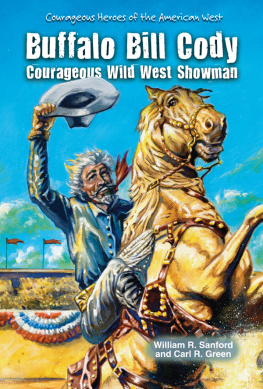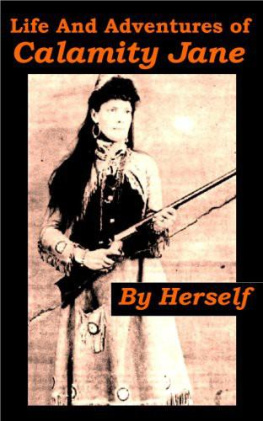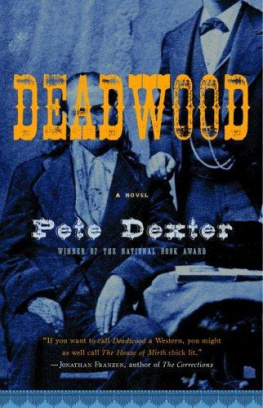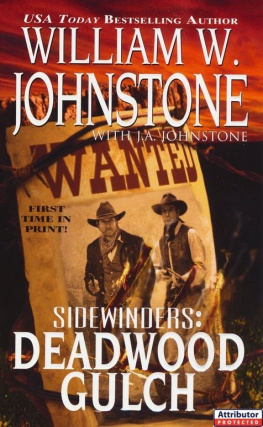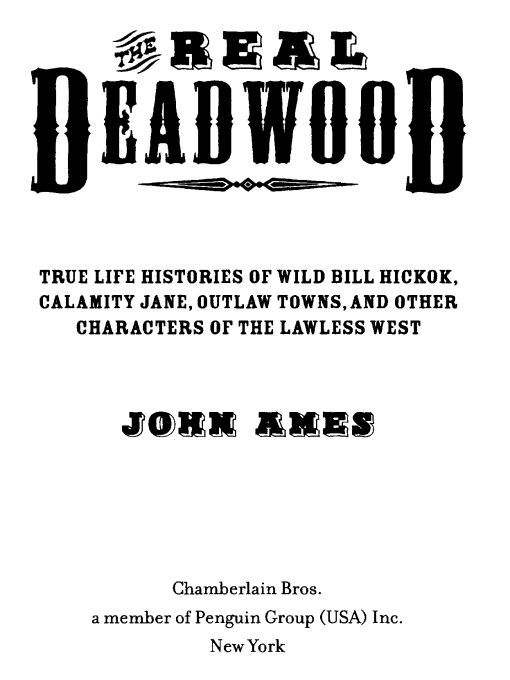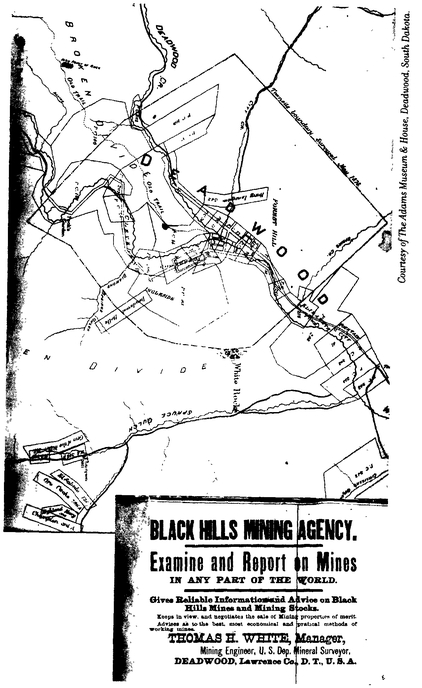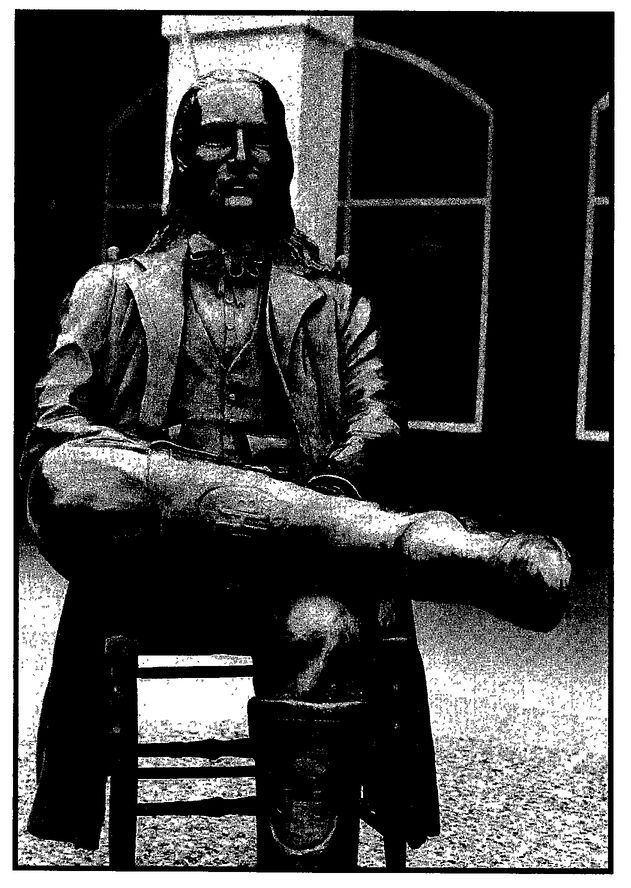Table of Contents
CHAPTER ONE
POOR MANS DIGGINGS! THE BIRTH OF DEADWOOD
It was not part of America, Deadwood series creator David Milch says about the infamous goldstrike camp that became a literally illegal town. They were an outlaw community, and they knew it.
Present-day Deadwood, South Dakota, is the seat of Lawrence County, located in the western part of the state in the northern tip of the verdant, wildlife-teeming Black Hills. Despite devastating fires, floods, mud slides, epidemics, blizzards, and several economic crises, Deadwoods tenacious residents have not only endured, theyve triumphed. Today, with the twin lures of their carefully preserved past and eighty gambling establishments, this town of not quite fourteen-hundred residents manages to entice two million visitors a year.
Its an unlikely fate for a community born of violence and blatant trespass on Lakota Sioux land. Just how might that early Deadwood of 1875-76 stack up against Tombstone, Abilene, Dodge, Hays City, and other notorious hellers in the pantheon of Wild West towns?
Plenty of towns in the Old West were violent in the two decades following the Civil War. Texas towns were all known for being rough as bore bristles, especially Fort Griffin (ruins now), Laredo, San Antonio, and El Paso. Independence, Missouri, was a wild frontier settlement where Wild Bill fought the first ever walking showdown, and Cimarron, New Mexico, was a favorite place to unlimber for killers like Clay Allison.
The 1870s cow towns (railroad towns surrounded by graze and equipped with extensive cattle pens) were the last stop along the famous long-drive trails originating in the longhorn cattle country of southeast Texas. Most earned reputations for being rough and wide-open: Sedalia, Abilene, and Ellsworth on the Missouri-Pacific and Kansas-Pacific railroads; Dodge City on the Atchison, Topeka and Santa Fe Railroad. Drunk cowboys cutting up roughshod at anything in sight. Railroad brakemen, approaching cattle railheads at night, always hastened to blow out their lanterns-favorite targets of inebriated cow nurses.
The concentration of money in cow towns drew gamblers, thieves, soiled doves (prostitutes), flimflam artistsand killers, both the professional and the impulsive amateur. The gunfighter was a product of the Civil War and its brutal lessons in easy-go killing.
Among all the cow towns, James Butler Wild Bill Hickok once opined, Abilene was the toughest of the bunch. And as one of the few men to succeed in taming that clapboard hellhole, albeit briefly, he likely knew. One night inAbilene, the lead flew so fast and furious that Marshal Hickok accidentally powder-burned his own deputy into an early grave.
But, then again, Hickok survived Abilene; he wouldnt be so lucky a few years later in Deadwood. No matter how wide-open those early cow towns might have been, historians and frontier buffs alike agree: there was no hellhole quite as hellish as a goldstrike camp. [Wyatt] Earp said gunmen in Deadwood were as proficient as in any western community, except possibly Tombstone. And both were goldstrike towns.
Most of the men were there for one reason: to locate color. And often, whatever gold they found they kept on their person. Gold-strike camps were sometimes visited by silent bedroll killers, murdering thieves who slashed the throats, or caved in the skulls, of sleeping and drunk prospectors.
In the early Black Hills gold rush days, such killings were rarely investigated, in part because they were usually attributed to Indiansthe favorite scapegoat of early Black Hills murderers. As is the case with the massacre of white settlers, killed at Al Swearengens order, in the Pilotepisode 1 of HBOs Deadwood.
Just how deadly was Deadwood in those fledgling years? Milch quantified the point starkly during an HBO press session for the show. Deadwoods average of one and a half murders a day, he pointed out, equaled about ten percent of the population per year. Such a murder rate in modern New York City would mean 700,000 New Yorkers killed annually.
But even this astounding risk was no deterrent for desperate men lured by the euphoric shout, Poor mans diggings! That was the magnetic pull of Deadwood Gulch and the Black Hills: easy placer gold. Gold found in relatively shallow deposits of gravel and sand, so that no expensive equipment or elaborate mining was required to get at it. And, for quite a few, the promise panned out: a million dollars worth of gold (at $20 an ounce) was pulled out in just June and July of 1876perhaps a bit of it by Wild Bill, who told his wife he did a little prospecting during the three weeks or so he spent in Deadwood.
THE RICHEST 100 SQUARE MILES ON EARTH: THE BLACK HILLS
The Lakota called them the Paha Sapa, whites called them the Black Hills (from a distance, they often appear dark even at high noon). By any name, this beautiful, mysterious, isolated extension of the Rocky Mountains is a perfect backdrop for the almost surreal place that early Deadwood must have seemed.
The Black Hills are a high-altitude island of timber surrounded by level, barren, treeless plain. They are far less arid than the surrounding region because some of the peaks rise more than a mile high. Thus, they arrest rain clouds that otherwise quickly blow over the dry plains. The resulting forests and streams make the Black Hills a haven for bears and other wildlife.
Forested slopes are covered with tall ponderosa pine, spruce, and aspen. Here and there, as travelers move through, huge chunks of crystallized gypsum flash like mirrors in the sunlight. Ancient granite peaks have been wind-eroded to spires. Limestone formations dot the region. Caves honeycomb the hills, and entire streams sometimes disappear underground.
But the Black Hills is also a weatherworn place that easily yields its secrets to inquiring eyes. The domelike uplift of the Black Hills, combined with long centuries of erosion, have laid bare the subsurface areas. Nothing proves this more graphically than the tilting, fully exposed strata of the Deadwood formation, as geologists call the impressive cliff above the town of Deadwooda cliff shaped very much like the one from which Dan Dority tosses Brom Garret in Episode 3, Reconnoitering the Rim.
A place that so openly beckons to gold-hungry men will always get noised about. Almost from the first moment white men laid eyes on the Black Hills, gold was their chief interest in the place (although a few brave or foolish fur trappers, too, sometimes risked angering the highly territorial Lakota).
An early Jesuit missionary hinted he had seen evidence of gold there. A reported strike in 1834 ended in disaster with the Lakota killing all the miners. Another party in 1852 found gold, but had to flee before taking any out.
The Lakota Sioux did not own the Paha Sapa in the strictly legal sense, only by right of squatters claim. But the U.S. government chose to formally recognize that claim in 1868 (the Treaty of Fort Laramie) and declared the Black Hills part of the Great Sioux Reservation. It was off-limits to whites, and the Lakota were determined to make sure the talking paper was upheld.

